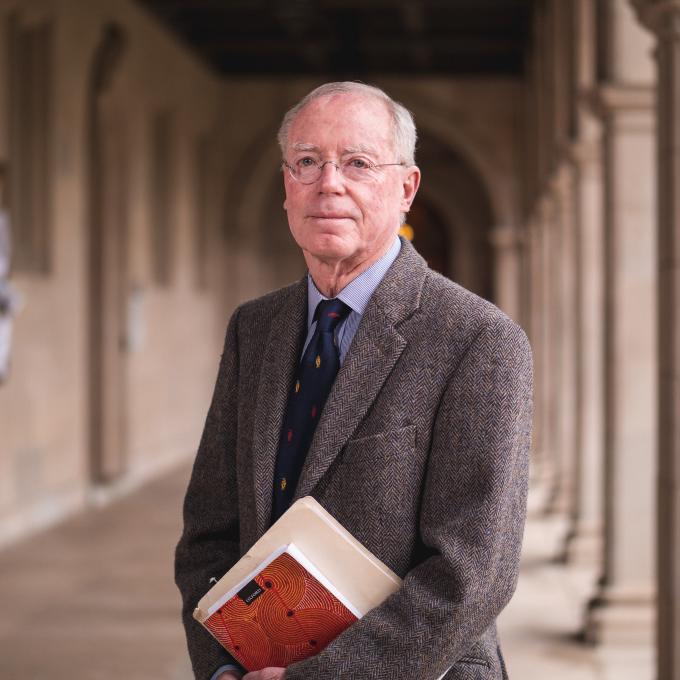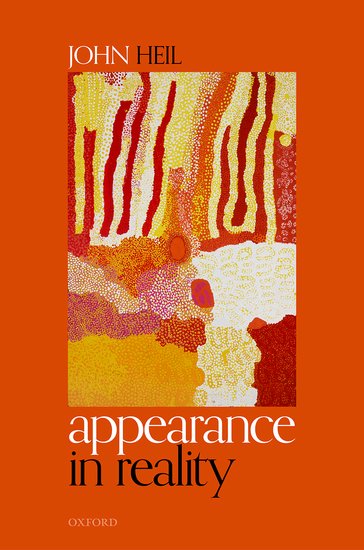
John Heil, professor of philosophy, is the author of four new books ranging in topic from logic to metaphysics: Appearance in Reality (Oxford UP, 2021), What is Metaphysics? (Wiley, 2021), First-Order Logic (2nd Edition, Hackett, 2021), and Relations (Cambridge UP, 2021). Heil’s work is often concerned with questions about reality and how we reconcile the world as it appears to us with the picture of the world presented to us by scientific analysis. In this Q&A, Heil discusses his new books and how he approaches these questions.
One of your books is called What is Metaphysics? So, what is metaphysics?
Physics gives us an account of the universe that seems largely at odds with the universe that we experience, the very universe that we use to verify our theories in physics. So what’s the relationship between appearance and reality? It appears to us that we have hard-edged items like books, but it could turn out that they’re just thickenings in fields or something like that.
Appearance in Reality deals with this question. You rely on instruments and everyday experience to verify your theories, but these theories are about unseen things that seem to have very strange properties. What’s the relationship between the appearance of things and their reality?
Metaphysics in that sense is really inescapable. Everybody poses these questions to themselves, but when people recognize that they've run into a metaphysical problem they typically say, “oh okay, that's just for the philosophers,” and they walk away from it, not realizing that they’ve actually taken a philosophical position already.
What are some examples of everyday questions that people run into about reality?
You might find yourself wondering, how reliable is this perception I’m experiencing? I see colors, but when I dismantle a colored object like a tomato, I end up with colorless particles. Where do colors come from? The easy answer is, “oh, they’re just in the mind.” But as soon as you make that move, you take the mind out of the material world and give it some special status. You’re partway towards a philosophical position already. You haven’t bought the farm, but you’ve made a down payment.
In Appearance in Reality, you are concerned with the distinction between “manifest” and “scientific” images. Can you say more about that problem?
The philosopher Wilfrid Sellars distinguished between two images of the world. The manifest image is our everyday conception of the universe and also the world that scientists deal with in their laboratories. The scientific image refers to the conception of the world that arises from something like physics.
A nice example of this problem was given by the physicist Arthur Eddington. While giving a lecture once, he said that he sat down to write with two pens and two tables. One pen and one table had been familiar to him from earliest childhood. That’s the manifest image. The other pen and table are mostly empty space. They’re just a bunch of electrical particles running around and bumping into things. That's the scientific image. How do you put the two pens together?
There have historically been three solutions to the problem. One solution is to say that the manifest image of the world is just in our minds. It’s an illusion. A second solution is to say scientific image is just a bunch of theories that bear no relationship to reality. More recently, people have said that reality is hierarchical. There’s the fundamental level that the scientific image deals with, and then there are these higher levels of reality that the manifest image is concerned with. But this third solution is not philosophically innocent. You have to start asking how these hierarchical levels relate to each other. Do they all eventually collapse into one level?
You offer a fourth solution in your book.
W.V. Quine had a famous saying: To be is to be the value of a variable. In logic, you quantify over variables. So you say, “for all x, if x is a person, then x is mortal,” and you’re quantifying over persons, over mortality.
In the book, I argue that our scientific theories, the manifest images of the world, tell us what truths to accept. What you get in the scientific image is an account of what those theories are true of. I’m holding a book, and I know that it is solid. But what is the book’s solidity? I argue that the best guess we have about that is what we get in physics. It’s Eddington’s table, a bunch of electrical charges bumping against each other in mostly empty space. But that’s not to say that it’s not solid! That’s just to say what solidity is.
How do you see the relationship between philosophy and science?
All too often in philosophy, people pick and choose as they pull items off the shelf of scientific theories and stick them together, just to get the answers they want. To me, metaphysics is organic, and so you can’t just assemble parts haphazardly. My philosophical godfather C.B. Martin used to say that you don’t understand a position unless you’ve lived it. That doesn’t mean you have to believe that position, but you have to understand it enough to feel its pull.
I see what I’m doing as continuous with the sciences. It’s not as though we’re in our ivory towers pontificating on the sciences. Problems move back and forth. There are scientists who understand the philosophical questions, and there are some philosophers who get the physics as well. They understand enough of it to pass these questions back and forth and see if the ideas hold water.





